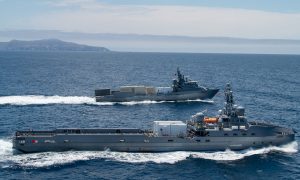
NATIONAL HARBOR, Md. -- A greater level of autonomy will be necessary for unmanned systems as the military seeks to expand its operational environment to stay competitive with adversaries, Vice Adm. Scott Conn, Deputy Chief of Naval Operations for Warfighting Requirements and Capabilities, N9, Office of the Chief of Naval Operations, said during a panel at the Navy League’s 2021 Sea Air Space expo here on Aug. 4. “We have to be intellectually honest with ourselves...if we're going to have…












